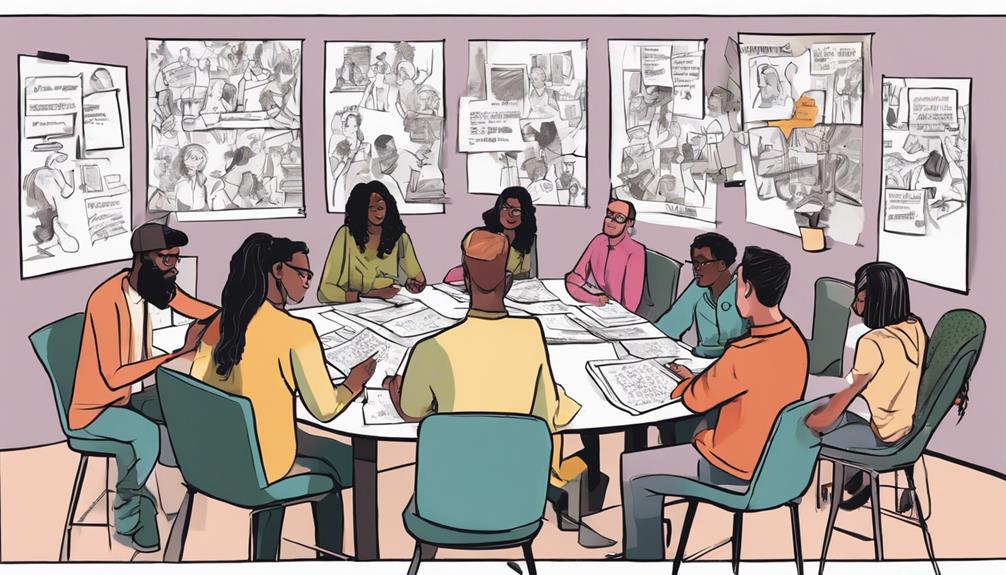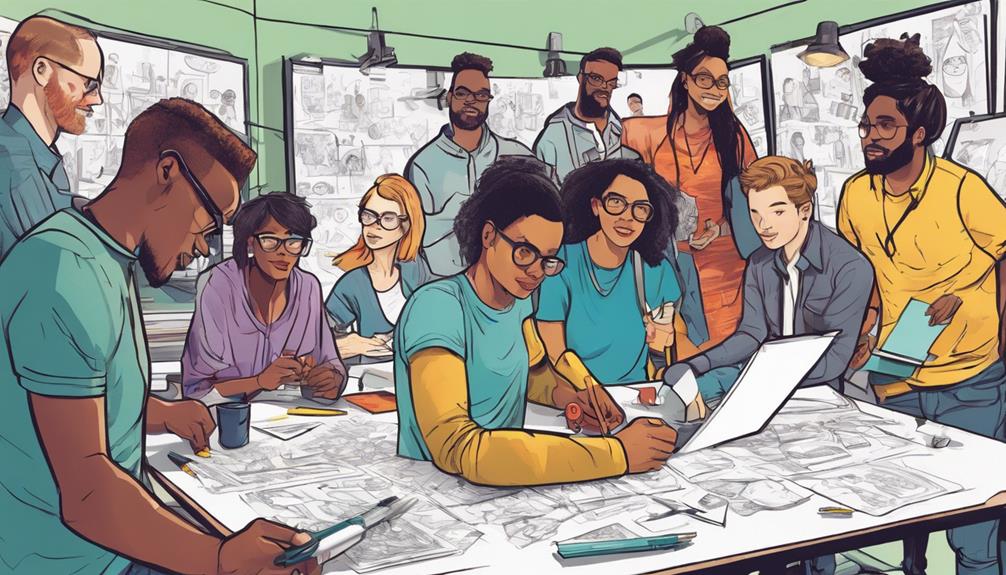Design Thinking and the Agile Manifesto have unique focuses and principles. Design Thinking emphasizes problem-solving stages and innovation, while the Agile Manifesto centers on collaboration, responsiveness, and customer satisfaction in software development. They are not the same but complement each other. If you're curious to explore their differences and benefits further, keep discovering the distinctions and applications of both methodologies.
Key Takeaways
- Design Thinking and Agile Manifesto are distinct concepts focusing on different aspects of problem-solving and software development.
- Design Thinking emphasizes innovation stages and problem-solving processes.
- Agile Manifesto prioritizes collaboration, responsiveness to change, and customer satisfaction in software development.
- While both promote adaptability, Design Thinking is more about creativity and empathy, while Agile is about tangible results and customer engagement.
- Design Thinking and Agile Manifesto complement each other but are not interchangeable terms.
Agile Manifesto Vs. Design Thinking Comparison
When comparing Agile Manifesto and Design Thinking, it's essential to understand their distinct focuses and principles. True or False, Design Thinking primarily revolves around problem-solving processes and fostering innovation through stages like empathy, ideation, and prototyping.
False. In contrast, Agile Manifesto centers on software development principles, emphasizing collaboration, responsiveness to change, and customer satisfaction.
Agile Manifesto principles prioritize individuals, working software, customer collaboration, and adaptability over rigid processes and plans. This approach enables iterative development, customer feedback incorporation, and quick value delivery.
On the other hand, Design Thinking follows a structured process to address complex problems and promote creativity and innovative solutions.
Agile Manifesto Principles Overview
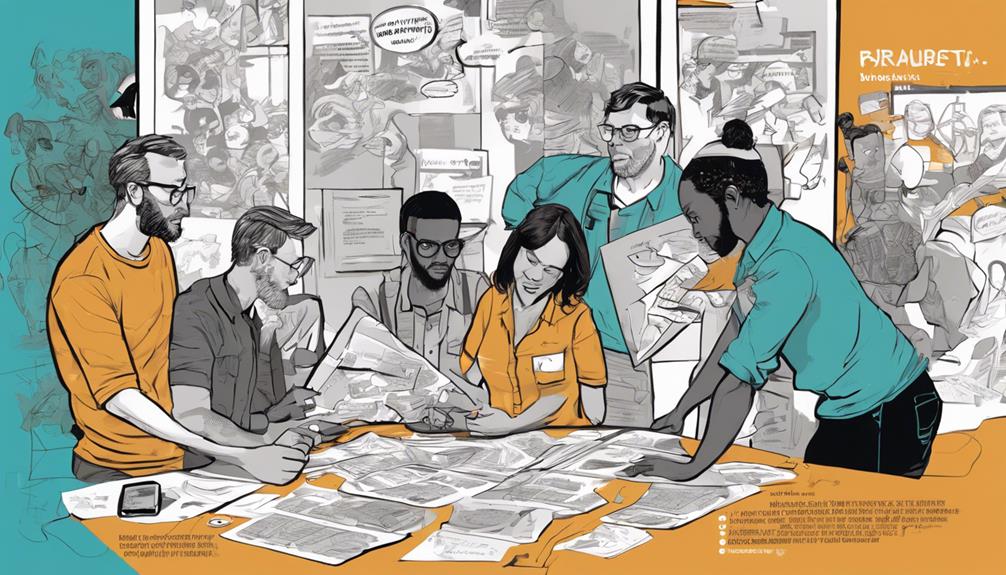
Agile Manifesto principles prioritize collaboration and tangible results in software development by emphasizing individuals, operational software, customer engagement, and adaptability.
By valuing individuals and interactions over processes and tools, Agile fosters a collaborative environment where team members communicate effectively to drive project success.
Prioritizing operational software over extensive documentation guarantees that tangible outcomes are delivered efficiently, focusing on delivering functional solutions.
Customer collaboration takes precedence over contract negotiation, aligning development efforts with customer needs and preferences to enhance satisfaction.
Embracing change over rigid planning enables teams to adapt swiftly to evolving requirements and market dynamics, promoting flexibility and responsiveness in development processes.
Ultimately, Agile Manifesto principles aim to achieve customer satisfaction through the continuous delivery of valuable software solutions that meet evolving needs and expectations.
Agile Design Methods Exploration
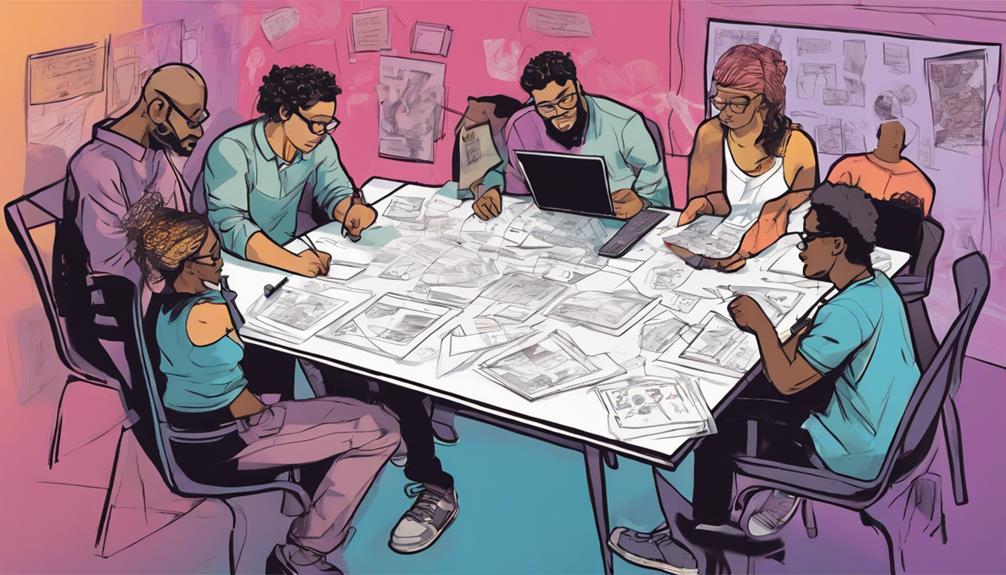
With a focus on iterative and incremental development, agile design methods prioritize customer feedback and collaboration within self-organizing teams to deliver value quickly. The essence of agile design lies in its ability to adapt to change and continuously enhance the design process to meet evolving requirements effectively.
- Flexibility and Adaptability: Agile design methods allow for adaptability in the design process, enabling teams to adjust to changing needs efficiently.
- Customer Feedback: Prioritizing customer feedback guarantees that the design aligns with user preferences and expectations.
- Collaboration: Emphasizing collaboration within self-organizing teams fosters creativity and collective ownership of the design.
- Iterative Development: Working in short cycles or sprints enables teams to gradually develop and refine the design, guaranteeing steady progress and quality enhancements.
Prioritization in Agile Teams

Effective prioritization techniques play a crucial role in maximizing the value delivered by Agile teams. By creating a ranked list of customer-valued items, Agile teams guarantee that high-value tasks are addressed first. Techniques such as the MoSCoW method or Value vs. Complexity analysis are commonly used to prioritize work efficiently. This approach allows Agile teams to manage resources effectively and focus on delivering value to customers in a timely manner.
The continuous reassessment and adjustment of priorities based on feedback are fundamental practices within Agile teams. This iterative process ensures that the most important tasks are promptly addressed and aligned with customer needs. Prioritization in Agile teams not only enhances productivity but also fosters collaboration and adaptability, leading to successful project outcomes.
Software Development Life Cycle Analysis
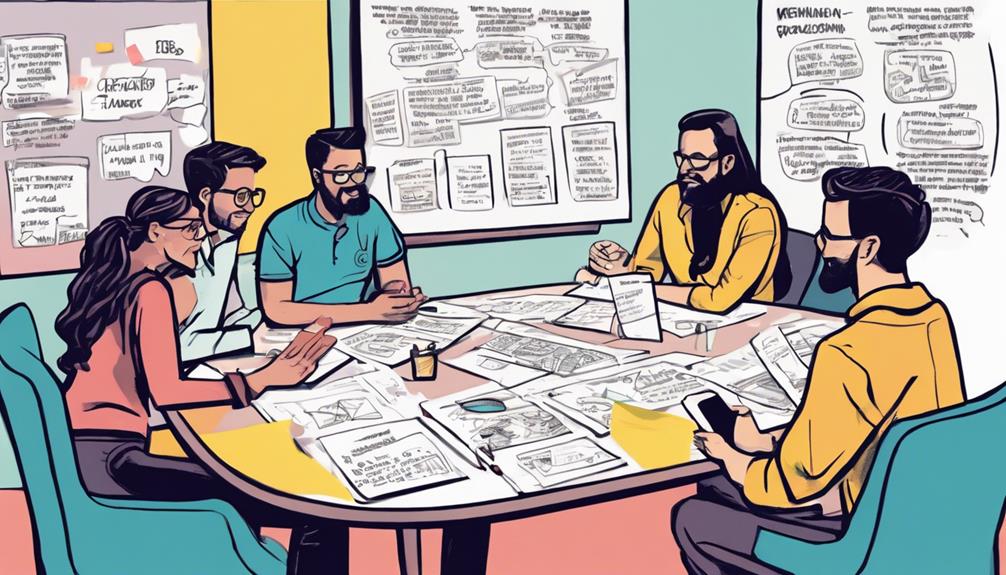
To understand the efficiency and effectiveness of software development processes, analyzing the Software Development Life Cycle (SDLC) is essential. The SDLC involves distinct phases like design, development, testing, and deployment.
In the design phase, a detailed plan for the software development process is created, focusing on system architecture design, component specification, and interface design. This phase evaluates the feasibility and cost-effectiveness of building the software, setting the foundation for subsequent development stages. By following a structured approach during the design phase, software creators establish a solid base for the project.
Frequently Asked Questions
What Is Another Name for the Agile Manifesto?
Another name for the Agile Manifesto is not a common label in the software development world. Understanding its unique principles is crucial for effective project management. Stay informed to navigate problem-solving successfully.
What Is Agile in Design Thinking?
When exploring Agile in Design Thinking, it's essential to understand its integration of Agile principles like iterative development with the design process. This dynamic blend allows for rapid prototyping and continuous improvement, fostering innovation.
Is Design Thinking Agile or Waterfall?
Design Thinking leans towards agility, emphasizing creativity and user-centric solutions. It aligns more with Agile's adaptable nature than Waterfall's rigidity. Incorporating Design Thinking into Agile methodologies fosters innovation and customer focus, enhancing your development process.
What Is the Difference Between Scrum and Design Thinking?
In exploring the difference between Scrum and Design Thinking, remember that Scrum is about structured roles and ceremonies for iterative development, while Design Thinking emphasizes user empathy, ideation, and prototyping for creative problem-solving.
Conclusion
To sum up, while design thinking and the agile manifesto share similarities in their focus on collaboration and flexibility, they aren't interchangeable.
Design thinking emphasizes empathy and creativity in problem-solving, while the agile manifesto prioritizes adaptability and customer collaboration in software development.
Both approaches offer valuable tools for innovation in today's fast-paced world, but each brings a unique perspective to the table.
So remember, while they may dance in the same domain, they're distinct in their own delightful way.

